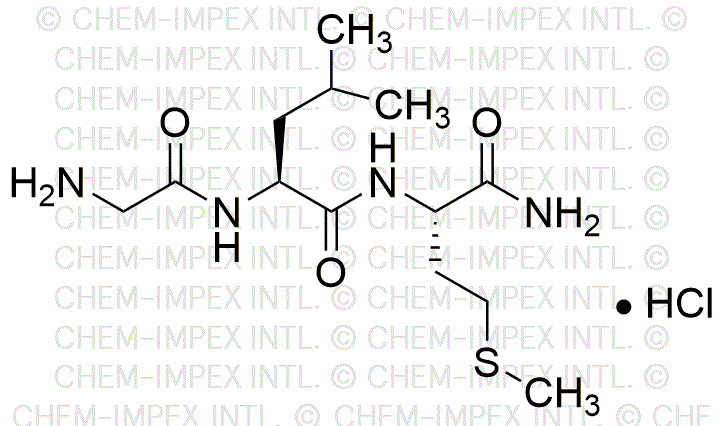Substance P (9-11) is widely utilized in research focused on:
- Pain Management Research: This compound plays a crucial role in studying pain pathways and could lead to the development of new analgesics, offering alternatives to traditional pain medications.
- Neurobiology Studies: It is used to investigate neurogenic inflammation and its effects on various neurological conditions, helping researchers understand diseases like multiple sclerosis and migraines.
- Pharmaceutical Development: The compound is explored in the formulation of drugs targeting the central nervous system, potentially improving treatments for anxiety and depression.
- Cancer Research: Substance P is studied for its role in tumor progression and metastasis, providing insights that could lead to innovative cancer therapies.
- Gastrointestinal Disorders: It is applied in research related to gastrointestinal motility and disorders, aiding in the development of treatments for conditions like irritable bowel syndrome.
General Information
Properties
Safety and Regulations
Applications
Substance P (9-11) is widely utilized in research focused on:
- Pain Management Research: This compound plays a crucial role in studying pain pathways and could lead to the development of new analgesics, offering alternatives to traditional pain medications.
- Neurobiology Studies: It is used to investigate neurogenic inflammation and its effects on various neurological conditions, helping researchers understand diseases like multiple sclerosis and migraines.
- Pharmaceutical Development: The compound is explored in the formulation of drugs targeting the central nervous system, potentially improving treatments for anxiety and depression.
- Cancer Research: Substance P is studied for its role in tumor progression and metastasis, providing insights that could lead to innovative cancer therapies.
- Gastrointestinal Disorders: It is applied in research related to gastrointestinal motility and disorders, aiding in the development of treatments for conditions like irritable bowel syndrome.
Documents
Safety Data Sheets (SDS)
The SDS provides comprehensive safety information on handling, storage, and disposal of the product.
Product Specification (PS)
The PS provides a comprehensive breakdown of the product’s properties, including chemical composition, physical state, purity, and storage requirements. It also details acceptable quality ranges and the product's intended applications.
Certificates of Analysis (COA)
Search for Certificates of Analysis (COA) by entering the products Lot Number. Lot and Batch Numbers can be found on a product’s label following the words ‘Lot’ or ‘Batch’.
*Catalog Number
*Lot Number
Certificates Of Origin (COO)
This COO confirms the country where the product was manufactured, and also details the materials and components used in it and whether it is derived from natural, synthetic, or other specific sources. This certificate may be required for customs, trade, and regulatory compliance.
*Catalog Number
*Lot Number
Safety Data Sheets (SDS)
The SDS provides comprehensive safety information on handling, storage, and disposal of the product.
DownloadProduct Specification (PS)
The PS provides a comprehensive breakdown of the product’s properties, including chemical composition, physical state, purity, and storage requirements. It also details acceptable quality ranges and the product's intended applications.
DownloadCertificates of Analysis (COA)
Search for Certificates of Analysis (COA) by entering the products Lot Number. Lot and Batch Numbers can be found on a product’s label following the words ‘Lot’ or ‘Batch’.
*Catalog Number
*Lot Number
Certificates Of Origin (COO)
This COO confirms the country where the product was manufactured, and also details the materials and components used in it and whether it is derived from natural, synthetic, or other specific sources. This certificate may be required for customs, trade, and regulatory compliance.


